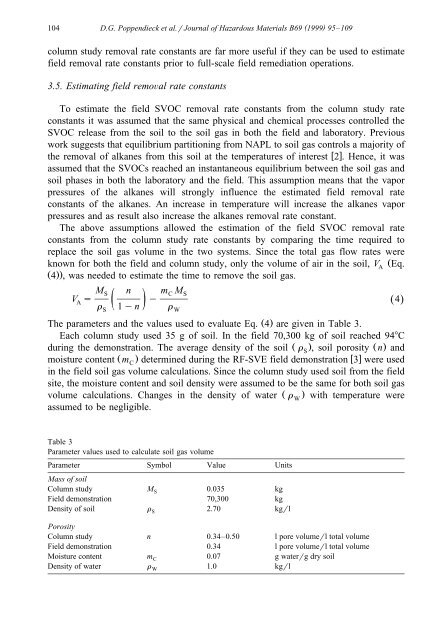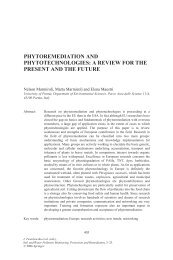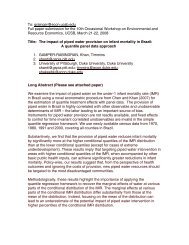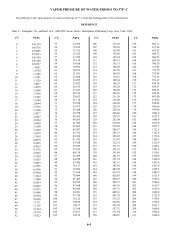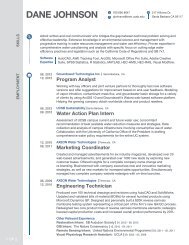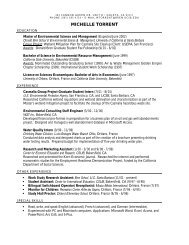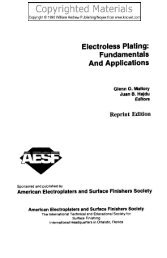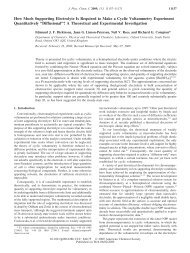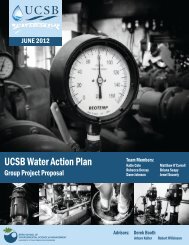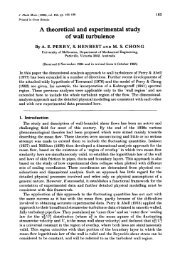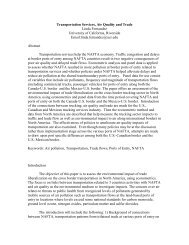SVE Thermal Enhancement
SVE Thermal Enhancement
SVE Thermal Enhancement
- No tags were found...
You also want an ePaper? Increase the reach of your titles
YUMPU automatically turns print PDFs into web optimized ePapers that Google loves.
104( )D.G. Poppendieck et al.rJournal of Hazardous Materials B69 1999 95–109column study removal rate constants are far more useful if they can be used to estimatefield removal rate constants prior to full-scale field remediation operations.3.5. Estimating field remoÕal rate constantsTo estimate the field SVOC removal rate constants from the column study rateconstants it was assumed that the same physical and chemical processes controlled theSVOC release from the soil to the soil gas in both the field and laboratory. Previouswork suggests that equilibrium partitioning from NAPL to soil gas controls a majority ofthe removal of alkanes from this soil at the temperatures of interest wx 2 . Hence, it wasassumed that the SVOCs reached an instantaneous equilibrium between the soil gas andsoil phases in both the laboratory and the field. This assumption means that the vaporpressures of the alkanes will strongly influence the estimated field removal rateconstants of the alkanes. An increase in temperature will increase the alkanes vaporpressures and as result also increase the alkanes removal rate constant.The above assumptions allowed the estimation of the field SVOC removal rateconstants from the column study rate constants by comparing the time required toreplace the soil gas volume in the two systems. Since the total gas flow rates wereknown for both the field and column study, only the volume of air in the soil, V ŽA Eq.Ž.. 4 , was needed to estimate the time to remove the soil gas.MS n mCMSVA sž /y Ž 4.r 1yn rSWThe parameters and the values used to evaluate Eq. Ž. 4 are given in Table 3.Each column study used 35 g of soil. In the field 70,300 kg of soil reached 948Cduring the demonstration. The average density of the soil Ž r ., soil porosity Ž n.Sandmoisture content Ž m . determined during the RF-<strong>SVE</strong> field demonstration wxC3 were usedin the field soil gas volume calculations. Since the column study used soil from the fieldsite, the moisture content and soil density were assumed to be the same for both soil gasvolume calculations. Changes in the density of water Ž r .W with temperature wereassumed to be negligible.Table 3Parameter values used to calculate soil gas volumeParameter Symbol Value UnitsMass of soilColumn study MS0.035 kgField demonstration 70,300 kgDensity of soil rS2.70 kgrlPorosityColumn study n 0.34–0.50 l pore volumerl total volumeField demonstration 0.34 l pore volumerl total volumeMoisture content mC0.07 g waterrg dry soilDensity of water r W1.0 kgrl


